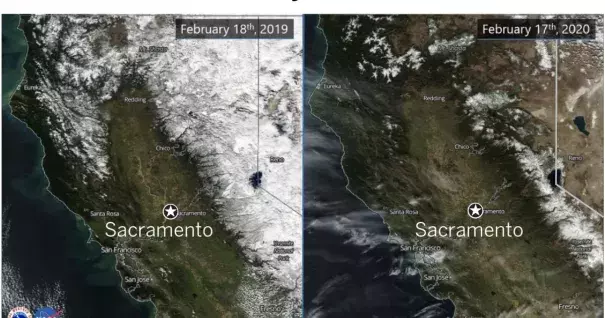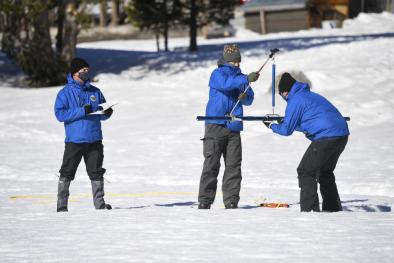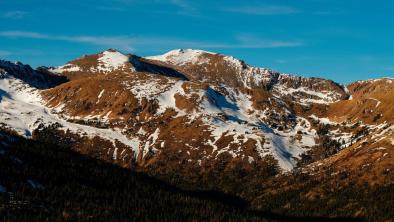California's super-dry February raises specter of early fires and drawn-down reservoirs

Climate Signals Summary: Climate change is accelerating snowpack decline in California, and it may be changing weather patterns leading to less precipitation in the state. This increases drought risk as well as the risk of wildfires.
Article Excerpt: California is set to conclude one of its driest Februaries in recorded history, elevating fears the state’s always-unpredictable fire season could arrive early this year — if March doesn’t provide some wet relief.
February is typically a prime month for Pacific storms to produce much of the Sierra Nevada snowpack — moisture that sustains wildlife, delays wildfire season and serves as a water bank for thirsty cities and farms. But those storms didn’t arrive in February, with a state survey Thursday showing the snowpack was 46% of average.
After an unusually wet winter last year, many of California’s reservoirs are well above their season average, so state water managers have few fears about near-term shortages. Yet if the coming months remain relatively dry, the state will be dependent on an uncertain future to prevent the state from swinging back into drought conditions.
“All it takes is an extreme atmospheric river to end up in a high-water situation even if the broader season is dry,” said state hydrologist Michael Anderson, who added that a storm is expected to hit the state in the next couple of weeks. “The two extremes can now coexist in a warmer climate.”
...
For now, the effects of the dry February can be seen from space — in satellite photos that capture the barren Sierra, and at the region’s ski resorts, desperate for fresh powder. They also can be seen across the state’s ranch lands — where cattle seeking fields of green grass shoots are finding dust instead.
It has not rained at all in downtown Sacramento in February, making it the driest February on record there in 153 years of record-keeping. The second-driest February was in 1899, when it rained four-tenths of an inch. Though it did rain there in January, it amounted to less than half the monthly average.
...
Because of the enduring dryness, Cal fire will probably begin staffing its seasonal firefighters and inmate hand crews earlier than last year, when an exceptionally soggy winter was capped with a surprise storm in May, said Mike Mohler, spokesman for the California Department of Forestry and Fire Protection.
...
The writing of what could come is already on the wall, Mohler said. A six-acre brush fire broke out at San Bruno Mountain State and County Park south of San Francisco on Friday, the smoldering remnants of a prescribed fire in Mendocino County grew out of control earlier this week, and there was a 100-acre fire near Lake Tahoe in mid-February.
...
In Southern California, where the fire season typically begins at the end of summer, the uneventful winter just gives the landscape that much more time to dry out, officials said. When the month is over, this February will probably rank as the 10th-driest on record for downtown Los Angeles, said meteorologist Joe Sirard of the National Weather Service.
...
Another disturbing trend is earlier melt-off of Sierra snow. California’s snowpack melted an inch just in February because of warmer-than-typical weather, officials said.
“What we see in California is the snowpack comes later, it leaves earlier,” Patzert said. “We shifted the seasons. Warmer falls, warmer springs. And so droughts are now hotter. They’re normal, but they’re hotter.”
Though a small storm is forecast for the first week of March, experts say it’s nowhere near big enough to make up for the our liquid deficit.
Related Content





